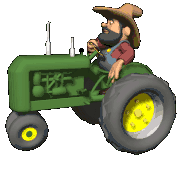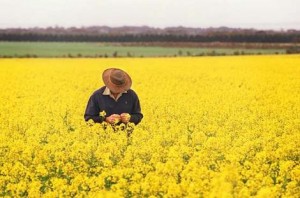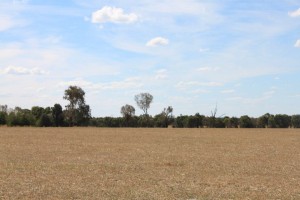As the soybean harvest ramped up this week, I wanted to use this week’s blog to centre on two things:
The first was to restrict my concentration primarily on one commodity and futures contract (in this case, Nov. 2013 Soybean Futures) in order to build up my understanding of how prices can move within a week, a day, an hour, and a mere fifteen minutes.
Unfortunately, the week wasn’t all that exciting for soy, so I was glad to use this week to also share some things with the class to make this whole experience a little more real. The second aim of this blog came out of a sense of nostalgia when reading about all the harvest activity going on in the US and around the world. It made me remember that there are real farmers out there working hard throughout the day and night to harvest their crops. As a farmer’s daughter, I hope to share some things about the harvesting experience, in order to create a little image in all of our minds as we trade, of the men and women who grow, tend to and harvest these commodities for a living. It also got me thinking of the important role women play on the land, particularly after reading the article ‘Strong women, strong industry’ from Australia during the week.
Hopefully my stories and photo’s will brighten up a week of soy that was rather dreary on the whole (even though some of mine are a little sad also).
A stunning Canola crop – a sight I never tire of
So here is my September story: Part me, part soy. Come walk with me!
**Apologies for the length readers***
———————–
So. Monday. We meet again.
For me, Monday’s are a little like this.
For Nov soybean futures, Monday was also a little on the low side. Speculation last week of dry weather in the USMidWest aiding harvest and promising yield results seem to be holding up.
For farmers (particularly during harvest season) Monday’s do not bring with it the same dread. This is because Monday’s for them are just another day in a seven day work week. Farming is a life choice, not merely a job, with weekends to rest and upwind. I remember not seeing Dad for the better part of a month as he sat on the harvester harvesting wheat, then canola, triticale, phalaris, rye grass, all day and throughout the night. The days were long and hot, but rewarding, particularly in a bumper year!
Turnaround Tuesday
The southern soybean harvest is getting underway folks! The news last week that rain received was to improve soybean yields was unrealised, driving prices up. November futures rose 4.75 to close at $13.125 after falling three percent in the previous three sessions.
Rain can be a blessing and a curse for farmers. The timing never seems to be right; it doesn’t come when it is needed and comes in bucketfuls when it is not. I remember a few years ago, we had the first great wheat crop since the dreadful, long years of drought. We had had good Spring rain to promote growth, then things were drying off beautifully before harvest began in Summer. Then the rain came…. Prolonged rain and wind can damage crops tremendously, flattening and thinning the crop as well as causing rot.
Oat crop ‘flat on the deck’ following heavy rains

This particular year heralded huge rains all down Australia, which held up the big contract harvesters up in the northern parts of the country. Usually they work their way south to complete the harvest, however the rain resulted in the bogging of harvesters, tractors and chaser bins. Imagine huge pieces of machinery dotted all over the country, unable to be removed after sinking up to two metres into the ground. It held up harvest all over the country and caused much financial loss as the large machinery required for some Southern crops never arrived in time. I spent hours and hours that Summer attempting to un-bog machinery, sometimes to no avail.
Waterlogged soil can give way completely (The Barker Boys)
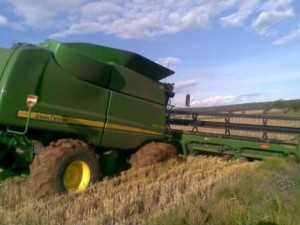
———————–
All Action Wednesday
Before I went to bed on Tuesday night I decided that if I was to check the soybeans futures price first thing in the morning and that they were sitting at a low relative price to the past two days, I was going to jump on board. So, at 7.30am (9.30am Chicago time), I wanted to see if the Turnaround Tuesday prices had dropped. They had! From a opening position of 1311’4, they were sitting at around 1308’75 this morning. I jumped on this price and bought two contracts. For the first two hours my returns were at positive 0.78%. I’m was not confident about these mysterious futures with no clear direction so was planning on selling quickly for a profit. I sold a few hours later for a profit of $1,200 (0.92%) – small, but a profit nonetheless!
Making some money made me think happy thoughts! Of sitting in the header next to Dad learning how to control such a mighty machine in 40C heat (before the days of air conditioning) to spending each morning and evening with my brother walking through phalaris in our shearing shed… Actually, that second one may need some explaining! Phalaris is a perennial grass that we harvest that is suitable for feeding stock and making hay. After the the seed is harvested, we used an auger (see picture below) to move the grain from the truck into our shed. Rather than it going straight into a storage facility, we would cover our entire shearing shed floor with huge tarps and spread out the pharalis seed manually. This was a huge task! We would have 3-4 people with wheelbarrows at the end of the auger catching the grain as it came out, who would then run to tip it out, come back, repeat, until the entire truck was empty. It was a huge job, but it did not finish there. The piles of pharalis had to be evened out to a height of about 4 inches and the entire amount had to be walked through barefoot at least twice a day. My brother and I often got this task, which we both enjoyed! It tickled our feet and the work dogs often came along to help out! The aim was to sufficiently dry the phalaris over a week or so. Then the huge task of shovelling it all back up and auger-ing back into the truck came. I won’t go into that, but it was hell hard work!
An ‘Auger’ to move the grain
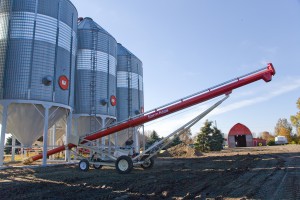
A beautiful Thursday
Today was pretty quiet on the soybean front, with volatility slowly down in anticipation of the quarterly stock reports from the USDA on Monday. November soybeans closed down 5 cents.
Futures trading aside, Thursday was a beautiful day, with the Vancouver sun shining beautifully! On our property, harvest usually occurs in December and January during our Summer months, with the sun giving off a lot more heat than the one here in BC at the moment. It is also the time for us to celebrate Christmas, Boxing Day, New Years Eve and New Years Day. While most of us are out celebrating with family and friends, my dad and uncle were often absent from the picture, rushing in to enjoy the Christmas feast and open presents before rushing out again. Timing is precious during harvest and you can rarely choose or dictate when is the right time to harvest. The crop and the weather decide that for you and once it starts, taking a break is a rare commodity, but there were never any complaints.
Friday on my mind
Friday has arrived and my story is coming to an end. Nov soybeans were as excited about the weekend as me and closed up 3 today at $13.1975. This week was about the market searching for new information about the size of the potential crop, with sideways trading prevailing until more is known.
The end of harvest season is a joyous affair. Farmer’s tan’s abound, dust seems to be wedged in your nose, eyes and ears, your socks are full of grass-seeds and your smile cannot be contained. With hard work comes big reward and it is best enjoyed with a cold Australian beer, a steak on the ‘barby’ (barbeque), a refreshing swim, a day off for Dad and a long afternoon nap!
Here are two of the happiest members of the farm, ‘Dash’ and ‘Biz’, who can’t wait to spend their days in the paddock with Dad as our focus turns to our sheep and cattle.
Two of our smiling Australian kelpie sheepdogs
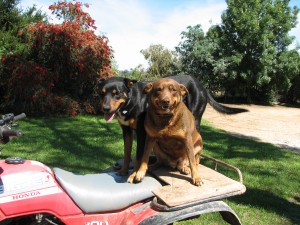
I am really sorry for the length of this and I hope you enjoyed it, or at least learnt something new about the highs and low of harvesting!
———————–
The journey of soy this week
Ino.com
My trades and portfolio summary
- Bought and sold Nov Soybeans on Wednesday for a Profit!
- I was really keen to get out of my corn contract, which had rarely been in the green since beginning trading last week. My strategy was to see if they went into a positive profit territory, get rid of them and then buy up short. I sold my one Dec corn contract 0.11% up on my purchase and then bought 3 short contracts for Dec corn to replace.
- I kept hold of my lovely, lovely Sept 14 Wheat! Oh, how I love thee!! Keep making money for me baby! Wheat futures did so well this week and I’m regretting not buying more!
| Bought/Sold to Open/Close | Date | Qty | Comdty | Contract | Price |
| Month | |||||
| Bought to open | 18-Sep | 1 | Corn | Dec-13 | 4.56 |
| Bought to open | 18-Sep | 1 | Wheat | Sep-14 | 6.63 |
| Bought to open | 25-Sep | 2 | Soybeans | Nov-13 | 13.09 |
| Close | 25-Sep | 2 | Soybeans | Nov-13 | 13.20 |
| Close | 25-Sep | 1 | Corn | Dec-13 | 4.56 |
| Sold to open | 25-Sep | 3 | Corn | Dec-13 | 4.56 |
Lessons learnt
- Following soybeans futures can be boring, but reminiscing is nice! I should have focussed on wheat instead, which was much more exciting due to ‘Frost in Argentina, wheat shortage in Russia, floods in China, and drought in Brazil’ (quote courtesy of A.Kagan!).
- Lack of information results in a bit of a mixed market, with no real gains to be made.
- The start of the harvest season is like looking over the edge but not knowing how deep the gully is. People are waiting on new information.
Strategy for next week
Livestock futures! So much to learn!

